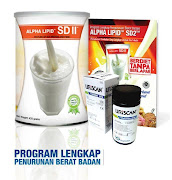Making your own baby food is easy, efficient, and economical. Rather than spending money on prepackaged baby food, you can use fresh produce, grains, and meat that you have on hand. Perhaps best of all, you'll know exactly what you're feeding your baby.
As an added benefit, going the do-it-yourself route gets your baby used to eating the same food the rest of the family does, a tactic that may pay off during the picky toddler years.
Choosing the right equipment
You'll need a tool to grind or puree the food. A regular kitchen blender or food processor will work, but a hand-turned food mill with different blades for various textures of food is best — and most convenient for making meals away from home.
A hand blender can be used to puree small amounts of food. You'll also need storage containers or ice cube trays for refrigerating or freezing extra portions.
Buying the best produce
Choose the freshest fruits and vegetables (many parents opt for organic whenever possible), and try to use what you buy in a day or two. When fresh isn't available, frozen is a fine option.
Good fruits to start with include apples, apricots, bananas, blueberries, mangoes, peaches, pears, plums, and prunes. Vegetables to try include asparagus tips, avocados, carrots, peas, potatoes, sweet peppers, sweet potatoes, and winter squash.
Some babies find corn hard to digest, and a few are even allergic to it. Others have trouble with gassiness after eating broccoli or cauliflower, so you may want to postpone introducing these cruciferous veggies.
Minimizing nitrate exposure
Nitrates are a chemical found in water and soil, and they're a concern when it comes to feeding your baby. Babies who ingest an unsafe level of nitrates can develop a type of anemia called methemoglobinemia.
Preparing formula with well water that's high in nitrates is the usual cause of the illness, but some vegetables can also contain nitrates. The most likely sources are beets, carrots, green beans, spinach, and squash.
To be on the safe side, the American Academy of Pediatrics (AAP) advises parents not to feed babies these vegetables before 3 months of age. (Actually, the AAP doesn't recommend feeding babies any solid food until 4 to 6 months, but if you do decide to offer your infant vegetables before 3 months, you'll want to avoid these in particular.)
There are a few things you can do to make sure your baby isn't exposed to high levels of nitrates. If you have well water, have it tested. It should contain less than 10 ppm of nitrates.
Nitrates increase with storage time unless frozen. When using fresh vegetables for homemade baby food, prepare the food as soon as possible after purchase and freeze extra servings right away. You might consider using frozen vegetables instead of fresh for the foods highest in nitrates.
Nitrate fertilizers are not used on land where produce is grown organically, so the risk of nitrates is much lower with certified organic produce.
Baby food companies test their products for nitrates. Store-bought baby food — including dishes containing beets, carrots, green beans, spinach, or squash — should be free of these chemicals.
Preparing the food
First, wash your hands, the produce, and all the bowls and utensils. Peel and pit the fruit if necessary.
All vegetables — and fruits like apples and prunes that need to be softened — should be cooked before pureeing or grinding. To preserve vitamins and minerals, bake, boil, or steam the produce until soft. If you boil the food, use as little liquid as possible and add some of the leftover liquid when mashing the food (or add it to your family's soup stock).
To prepare fruits or vegetables, simply add a little liquid (breast milk, formula, or cooking water) to the produce as you puree or grind until the consistency is soupy. As your baby adapts to solid foods, you can add less liquid. If the fruit has seeds, strain before serving.
Grains like rice or millet can also be pureed or ground in a food mill. Cook them first according to package directions.
To prepare meat and poultry, remove the skin and trim the fat before cooking. Then puree the cooked meat in a blender or grind it up in a food mill with a little liquid. For older babies, you can simply chop the meat into very small pieces.
Serving tips
• Serve the food no warmer than body temperature.
• Avoid heating meals in the microwave. Microwaves heat unevenly and can create "hot spots," areas of the food that are much hotter than others.
• Only dish out the amount of food you think your baby will eat at that feeding. You'll need to toss what's left over because your baby's saliva will thin the mixture and make it easy for bacteria to grow in the food.
• Don't sweeten your baby's food. Babies don't need any extra sugar. And never use honey or corn syrup, which can cause botulism — a potentially fatal form of food poisoning — in babies.
• Go easy on the spices. In fact, leave them out entirely until your baby is 8 or 9 months old. Then try a small amount of one spice at a time — skipping the hot ones! Wait a few days between introducing new spices to make sure that your baby doesn't have any adverse reactions. (Herbs and spices aren't generally allergenic, but it's always a good idea to introduce new foods one at a time, just in case.)
• Refrigerate leftovers in an airtight container and use them up within a couple of days. You can also freeze leftovers in ice cube trays. After the cubes are frozen solid, remove them and store them in plastic freezer bags. Fruits and vegetables frozen this way will last six to eight months. Meat, including fish and poultry, will last about one to two months.

























One Response to How to make your Own Baby Food...let's Share it
[B]NZBsRus.com[/B]
Escape Crawling Downloads With NZB Files You Can Swiftly Search Movies, PC Games, MP3s, Software & Download Them @ Flying Rates
[URL=http://www.nzbsrus.com][B]NZB[/B][/URL]
Post a Comment